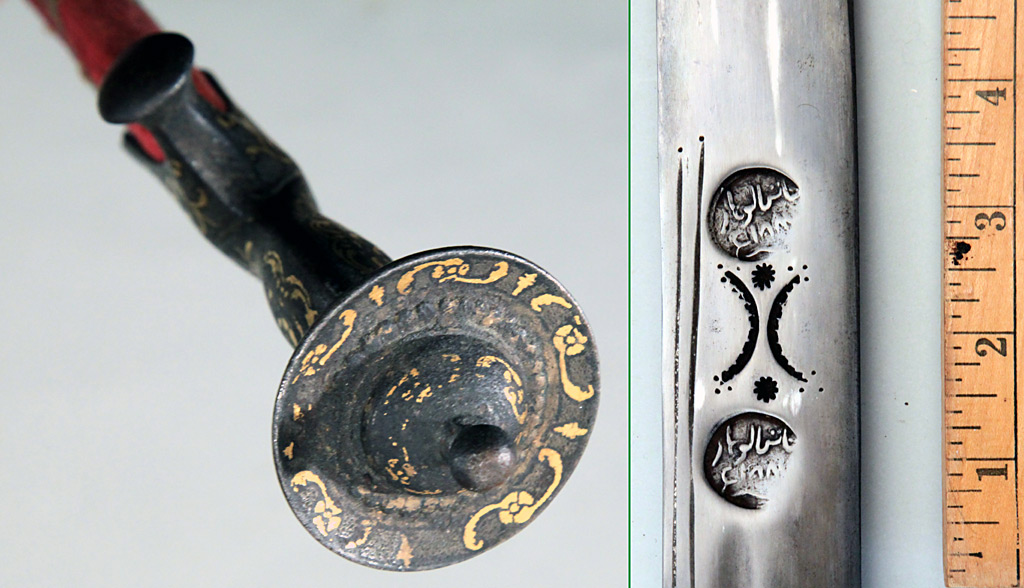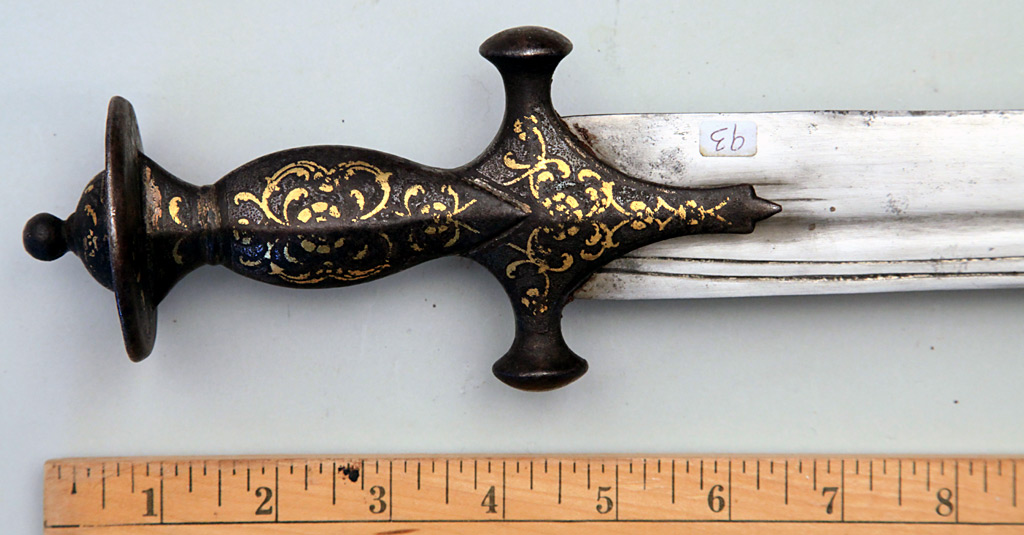
A handsome tulwar hilted saber features a darkened iron hilt with rubbed and worn gold damascene decoration on the quillon block, grip and disc pommel. The background is mostly dark iron, however patches of more reflective texture hint that the gold once lay against a silvered background. Though much has been lost to time, enough remains to recall the original splendor. The curved blade is just over 29 inches in length along the back concave side. This back side is tapered to a near edge for the far half of the blade and has been honed to a very sharp edge around the tip and along the convex side. The side with stamped cartouches with calligraphic inscriptions, dentate arcs and stars appears to have a darkened finish that is worn to streaks of bright metal. The variation seen about two-thirds of the distance to the tip appears to be a variation in this darkened finish and is not a photographic artifact. On the opposite unmarked blade face, the darkening finish appears to have been removed to bright metal with an unfortunate fingerprint and other shallow defects. A wooden scabbard is covered by red to maroon fabric showing some losses. A simple white metal chape secures the tip and a silvered metal decorative panel has been installed on one side. Unfortunately the fabric is worn through and the sides of the scabbard have pulled apart along the edge side in the third nearest the mouth of the scabbard (though they reapproximate with gentle pressure suggesting repair is possible). Lew dated this tulwar to around 1800 - the scabbard is clearly newer, though still with definite age. Overall length is 35½ inches in the scabbard with a weight of 37.15 ounces.







